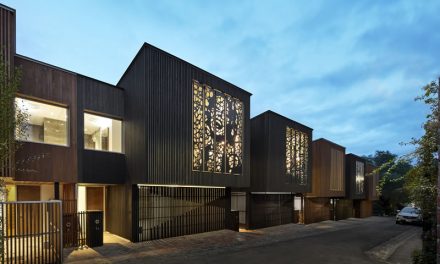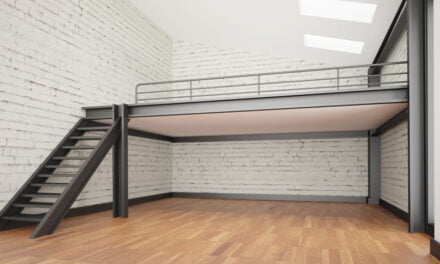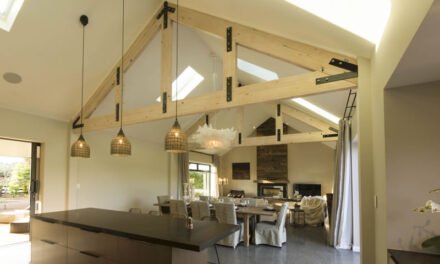This seemingly esoteric term is a vital tool in meeting our carbon targets. By Afzal Laphir, Principal Engineer, Meyer Timber Pty Ltd.
It might seem like I am about to state the obvious for all those of us in the timber sector, but this is a message that needs to be told by everyone in the industry. Before going into the intricacies, the basic facts are that timber stores carbon (and a lot of it). When timber is harvested and used within a building, this allows room for more trees to grow and store more carbon. You see where this is leading – the more timber we use in construction, the more we help the environment. And now for the finer details.
Carbon is a critical element that is essential for life on Earth. However, its increasing concentration in the atmosphere, in the form of carbon dioxide (CO2), due to human activities is causing significant environmental problems such as global warming, ocean acidification, and climate change. Therefore, it is important to manage carbon emissions and promote sustainable practices to mitigate these impacts.
In September last year, Australia’s net-zero emissions target by 2050 was enshrined in legislation. In order to make this a reality, the traditional method of controlling operational carbon emissions (see the main image, above, for definitions (source: www.rpsgroup.com)) alone is not enough. There needs to be an increased focus and investment on tackling embodied carbon and this is where timber can play a significant role with its negative carbon footprint.
WHAT IS EMBODIED CARBON AND UPFRONT CARBON?
Embodied carbon refers to the emissions associated with materials and construction processes throughout the life cycle of a building and includes upfront carbon, use-stage embodied carbon and end of life carbon. Emissions caused during manufacture of building products, transport of building products to site and construction of buildings are defined as upfront carbon (British Standard EN 15978).
WHY IS EMBODIED CARBON IMPORTANT?
The built environment represents about 40% of all emissions worldwide, of which approximately 11% result from embodied carbon emissions, i.e in the manufacturing of building materials and products such as steel, cement and glass (IEA Global Status Report 2019) In Australia, the embodied carbon proportion is higher, approximately 16% (source: Green Building Council of Australia, 2022) and according to a recent Clean Energy Finance Corporation report, this figure is expected to double by 2050 if the construction sector doesn’t clean up its act.
About 80% of the embodied carbon emissions happen upfront, i.e. they occur during the construction stage, which represents about 25% of a building’s lifetime emissions. As we reduce operational carbon with time, through a shift towards renewable energy, the proportion of upfront carbon emissions will increase further. This means, as we look ahead, embodied carbon will become the most important metric for emissions reduction in buildings, replacing operational carbon.
Considering embodied carbon in buildings is also important because it helps to promote a more holistic approach to sustainable design. By taking into account the full life cycle of a building, including its embodied carbon, designers and developers can make more informed decisions about materials selection and building design that can help to reduce the environmental impact of the built environment.
HOW CAN TIMBER CONTRIBUTE?
Trees absorb CO2 from the atmosphere and store it as carbon in their wood, roots, and leaves. This process is known as carbon sequestration or carbon capture. When timber is harvested and used in construction, it can continue to sequester carbon for the lifetime of the building. This means that using timber in construction can have a negative carbon footprint, as it can offset the emissions associated with other building materials such as concrete or steel. In general, making a product from steel requires almost 20 times more energy than from kiln-dried (KD) hardwood.
According to the WoodSolutions publication “Environmental Product Declaration – Softwood Timber” (Dec 2017), the production of 1m3 of sawn, KD softwood generates a negative 760kg of global warming potential (GWP) emissions.
By the same token, a study carried out by Scion in 2010 on LVLs produced in NZ (see Fig 2, below) concluded that the production of treated LVLs gives a negative 612kg of GWP emissions. Therefore, whether softwood or engineered timbers like LVLs are used in construction, the negative embodied carbon component remains significant. So much so, research studies (Durlinger et al, 2013 and Carre and Crossin, 2015) have found that the embodied carbon emissions of an engineered timber building can be as much as 75% less compared to its conventional concrete-steel counterpart on a per square metre basis.

CALCULATING UPFRONT CARBON?
The Green Star Building Council Australia (GBCA) has kicked off the net-zero initiative in their latest version of Green Star Performance allowing the transition of existing buildings away from fossil fuels.
The GBCA’s Upfront Carbon Emission Calculation guide (Interim Ver 1 Dec 2022) is a valuable tool for designers, that sets out the basis on which a building’s upfront carbon emissions modelling should be completed when the intent is to compare a reduction to a typical building in Australia. An expanded version of this guide is expected anytime soon.
A more simplistic calculation is provided by the three nail plate companies, Pryda, Mitek and Multinail, through their respective design software. The total stored carbon in trusses and wall frames are calculated based on carbon representing 50% of a tree’s dry mass (see Fig 3, below). To put things into perspective, an average two-storey house consumes around 20m3 of timber, meaning it stores about 4.6 tonnes of carbon which translates to as much as 14 tonnes of net CO2 absorbed from the atmosphere. This equates to the amount of CO2 emitted by a standard car that has travelled a distance of a staggering 100,000km.

TIMBER FOR A GREENER FUTURE
It is important to acknowledge the wonderful work done by a few associations in promoting timber as the building material of choice. FWPA’s Timber Framing – the Ultimate Renewable campaign through various media platforms has hit the right note with its target audience. The Planet Ark’s Make it Wood – Do your world some good is another program that aims to encourage increased use of responsibly sourced wood as a building material.
More recently, with their slogan Creating a Greener Future, the Carbon Warrior drive initiated by the Frame & Truss Manufacturers Association (FTMA) is attracting positive discussion not just within the industry, but extending to the wider public. Their recently released Carbon Warrior discussion point list, published in TTN as the Case for timber is a useful resource to support this campaign.
The benefits of timber as a renewable and sustainable material are well-known and initiatives like these can help to raise awareness and encourage the use of timber in construction. It is important that we continue to support these initiatives and work towards a more sustainable and environmentally friendly built environment.
And this is where you come in. Use these resources and promote timber. Focus on the stored carbon from the nail plate software outputs and promote the environmental benefits to all your builders. Make it part of general conversation both inside and outside of your business activities.
If we want to achieve net-zero by 2050, there is currently no renewable building material more available and versatile than timber to make this a reality. Let everyone know this.
For more information on this topic, contact Afzal Laphir via email at AfzalL@meyertimber.com.au












